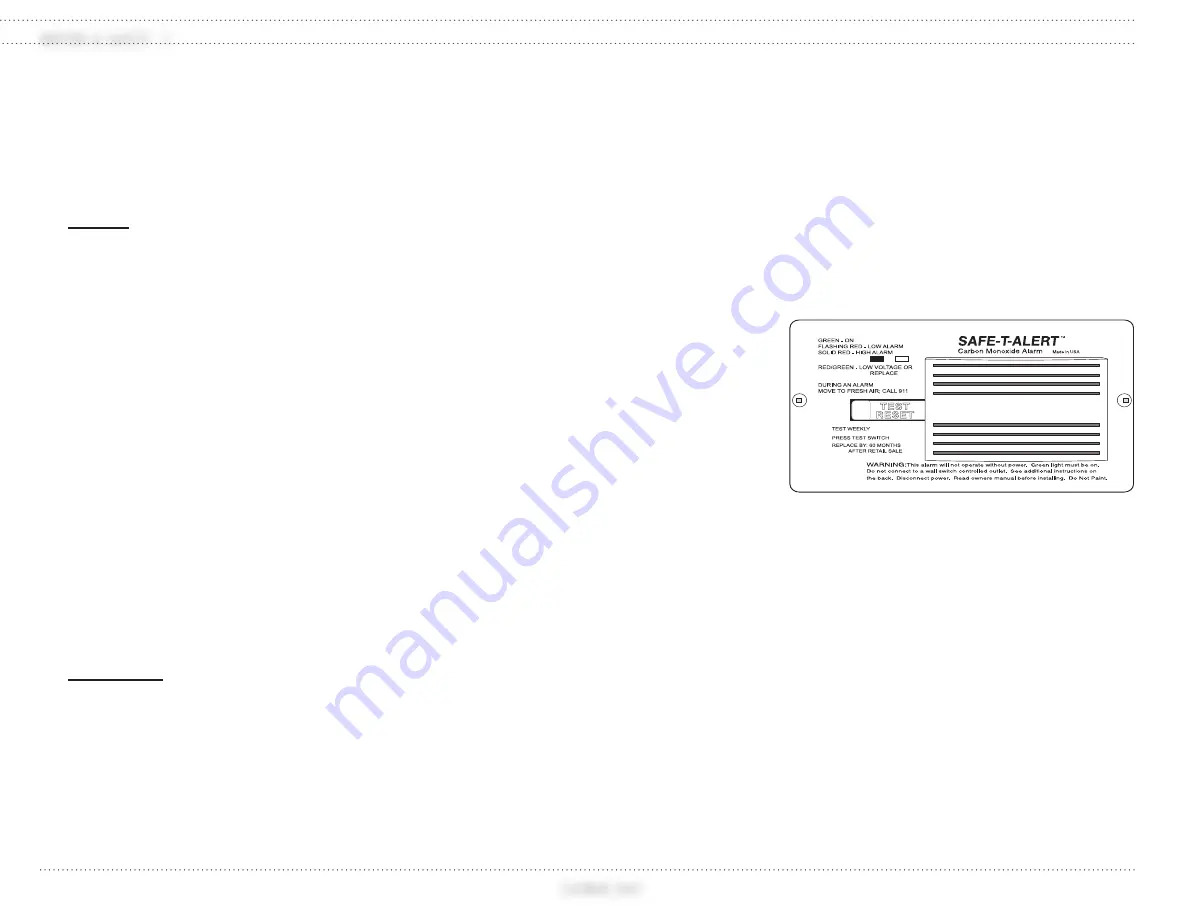
DRIVING & SAFETY - 2
CAYMAN 2007
44
Operation
When a 9 Volt DC battery is correctly
connected, the LED will fl ash every minute
and a loud alarm will sound when a product of
combustion is sensed.
NOTE:
The unit will not operate without
a battery. A battery flag will pop
up preventing the unit from being
installed to the mounting bracket
without a battery. Carbon zinc
batteries average a service life of one
year. Alkaline batteries average a
service life of one to two years.
Testing
Simply press the test button on the smoke
alarm cover for approximately three seconds.
The alarm will sound if all electronic circuitry,
horn and battery are properly working. The
smoke alarm should be tested at least once a
week when the motorhome is in use, prior to
each trip and when the motorhome has been
in storage. When testing the smoke alarm it is
advised to stand at arm’s length.
CAUTION:
Never use an open flame to test the
smoke alarm as this may ignite the
alarm or surrounding area and set fire
to the motorhome.
Maintenance
Maintenance for Proper Operation:
Test the smoke alarm once a week.
Keep a supply of 9 Volt DC batteries on
hand.
Vacuum the slots in the cover and sides
with a soft brush attachment every
month. Test the smoke alarm after the
unit has been vacuumed.
The smoke alarm will beep once a
minute when a low battery condition
exists to signify battery must be
immediately replaced.
Troubleshooting
If the alarm does not sound when the test
button is pushed, or with a smoke test, try the
following:
Inspect
alarm for obvious damage.
Check for the recommended battery
type.
Check the battery for proper connection
or replace the battery if needed.
Gently vacuum as recommended.
If these procedures do not correct the problem,
DO NOT
attempt repairs. If the smoke alarm
is within the warranty period and the terms
indicate the nature of the problem, return the
unit to your dealer. Smoke detectors beyond
the warranty period cannot be economically
repaired.
CARBON MONOXIDE DETECTOR
American National Standards Institute
(ANSI) A119.2 - Fire & Life Safety 3-4.6
Carbon Monoxide Detectors
states
“All RVs
equipped with an internal combustion engine or
designed with features to accommodate future
installation of an internal combustion engine
and truck campers shall be equipped with a
listed CO detector installed in accordance with
its listing.”
The motorhome is equipped with a Carbon
Monoxide detector. Everyone is at risk with
Carbon Monoxide poisoning. Carbon Monoxide
(CO) is a colorless, odorless and tasteless gas
that binds with hemoglobin reducing the body’s
ability to absorb and carry oxygen to vital
organs. Even low levels of CO have been known
to cause brain and other vital organ damage in
unborn infants, with no effect on the mother.
When removed from exposure, the symptoms
dissipate as Carbon Monoxide is expelled
through the lungs. Level of contamination
in the body reduces at half-life increments at
approximately four-hour intervals. Treatment
with Oxygen will quicken recovery time.
020042b
Summary of Contents for CAYMAN 2007
Page 12: ...GENERAL INFORMATION 1 CAYMAN 2007 8 NOTES...
Page 14: ......
Page 16: ......
Page 52: ...DRIVING SAFETY 2 CAYMAN 2007 48 NOTES...
Page 80: ...EXTERIOR INTERIOR CARE 3 CAYMAN 2007 76 NOTES...
Page 100: ...APPLIANCES 4 CAYMAN 2007 96 NOTES...
Page 132: ...WATER SYSTEMS 6 CAYMAN 2007 128 NOTES...
Page 160: ...ELECTRICAL SYSTEMS HOUSE 8 156 CAYMAN 2007 NOTES...
Page 226: ...INDEX 222 CAYMAN 2007 NOTES...



































